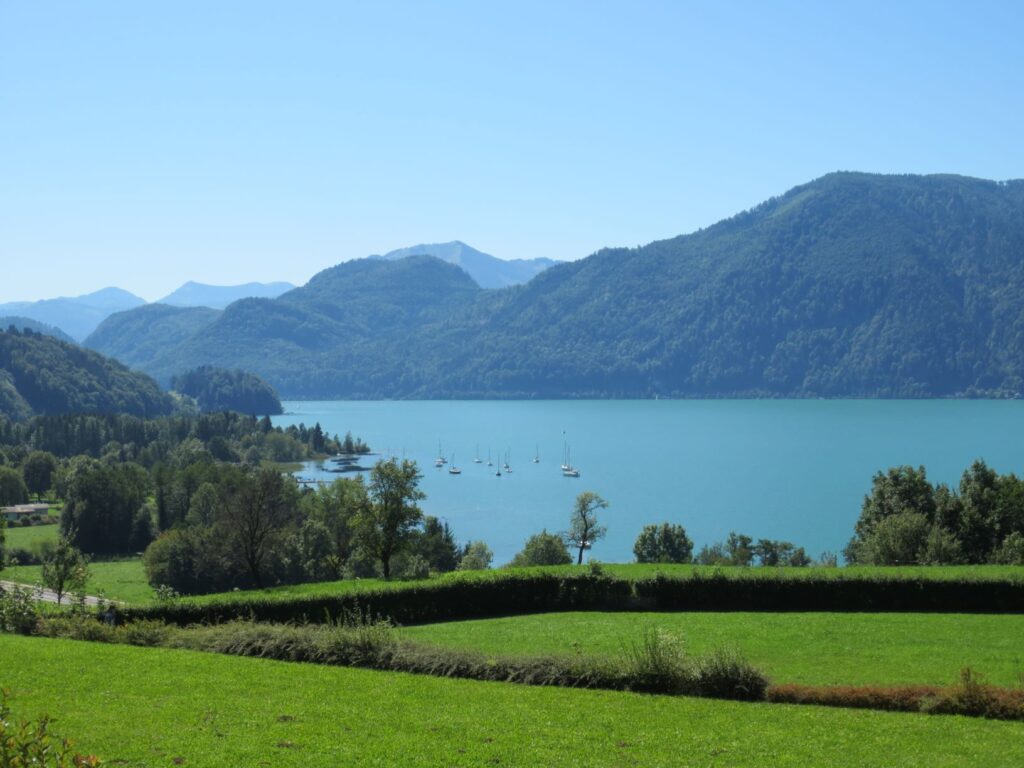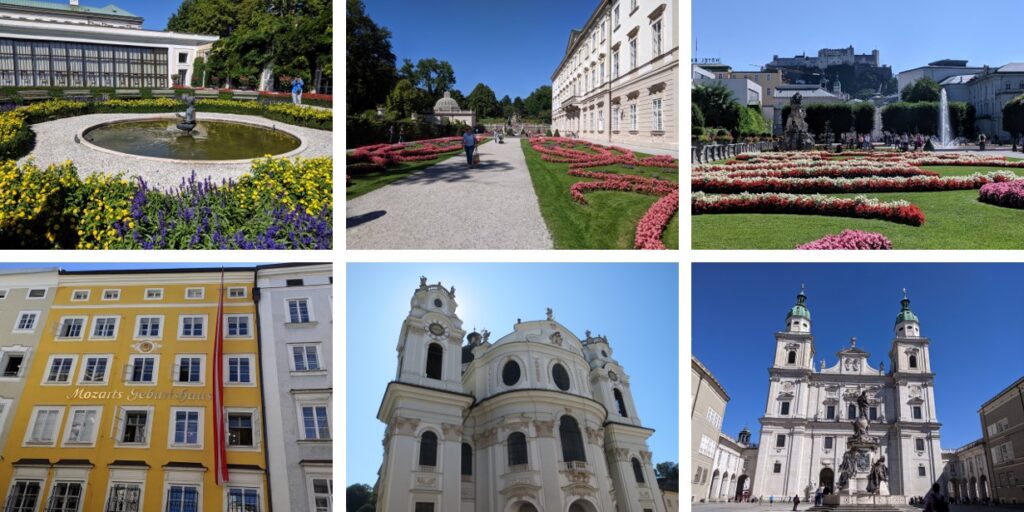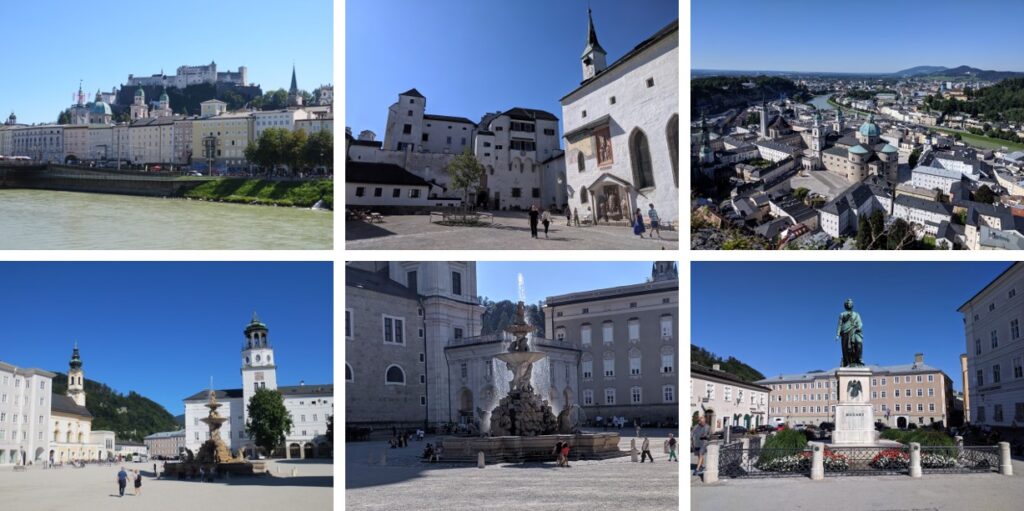During our stop in Linz on our recent Danube luxury river cruise, AmaWaterways offered several tour options ranging from 1.5 hours to 8 hours in length. We have the FOMO (fear of missing out) gene so we try to see everything. So, we decided to go on two tours. The first tour was a Linz Walking tour (highlights shown in the previous post) and a half-day Salzburg Excursion (7 hours). These two tours made for a very long day but were definitely worth it.
The difference between the full-day Salzburg and half-day Salzburg excursions are that the full-day tour stops in Mondees, the famous site of the wedding church from “The Sound of Music,” and you have more leisure time in Salzburg.
Getting there
Salzburg is the fourth-largest city in Austria and a UNESCO World Heritage Site. It is located about 2 hours from Linz. The tour departed at 11:30 AM on a 30-passenger coach. It is recommended to either eat a large breakfast, early lunch, or take something to eat on the coach. The coach was comfortable and the scenery was pretty. About an hour into the journey we stopped for a break before continuing on to Salzburg.

Tour
When we arrived in Salzburg, we started with a walking tour to learn about the history and culture of the city. We start with a walk through the beautiful Mirabell Gardens. Mirabell Palace and gardens are a cultural heritage monument. The palace was built in 1606, it has been rebuilt a few times in different styles. The current Neoclassical style is from about 1818. The beautiful gardens are geometrically arranged with mythology-themed statues. Several scenes for “The Sound of Music” were filmed here such as the scene where Maira and the children sing “Do-Re-Mi.”
We then crossed the river to visit No. 9 Getreidegasse. This is where Wolfgang Amadeus Mozart was born on January 27, 1756. The family lived on the third floor of the building. It is now a museum exhibiting Mozart’s early life. The next site we visited was the Kollegienkirche (Collegiate Church). Salzburg has three universities and this is the church of the University of Salzburg. The church was built in 1964 in the highly decorative Baroque style.
The last stop on the tour was the 17th-century Cathedral. A church was founded on this site in 774, however, the building burned down after a lightning strike. There have been many rebuilding and expansions during the Middle Ages. The current Cathedral was started in 1614 in the Baroque style. Mozart was baptized in this Cathedral on January 28, 1756. In front of the Cathedral is the Maria Immaculate column. If you look at the statue from the center of the archway at the back of the Domplatz, it looks like the Marian figure is surrounded by angels and wearing a crown. These items are actually on the facade of the Cathedral.

Leisure Time
After the tour, we had some leisure time to either explore on our own or to shop. We decided to visit the Hohensalzburg Fortress. The fortress looms over the city of Salzburg on top of the Festungsberg mountain at 1,660 feet. The fortress is easily accessed by the Festungsbahn funicular railway. The Fortress Hohensalzburg is one of the largest and best-preserved medieval castles in Europe. Construction began in 1077 with a basic bailey but it gradually expanded with the ring walls and towers added in 1462 and gunpowder stores and gatehouses added in 1618. It was refurbished in the late 19th century and is now a tourist attraction.
On our way back through the historic center, we walked through Residnezplatz and Mozartplatz. Residenzplatz is a large square, the square has the Cathedral to the south, the Alte Residenz (now an art museum) to the west, Neue Residenz with bell tower (now Salzburg museum) to the east and several historic private houses to the north. In the middle of the square is the Residenzbrunnen fountain, a large baroque fountain with Triton on top. To the northeast of Residnezplatz is Morzartplatz, which has the Mozart monument.

Bonus
Don’t forget to try the Original Salzburg Mozartkuglen (Mozart ball). It is a small round pistachio marzipan and nougat candy covered in dark chocolate. It was created in 1890 by Paul Fürst. Make sure you try the original one, wrapped in blue and silver foil and not an imitation.

If you are ready to explore Austria or embark on a river cruise, get in touch with us to start planning!
